Is My House Suitable for Solar? A Comprehensive Guide for Homeowners
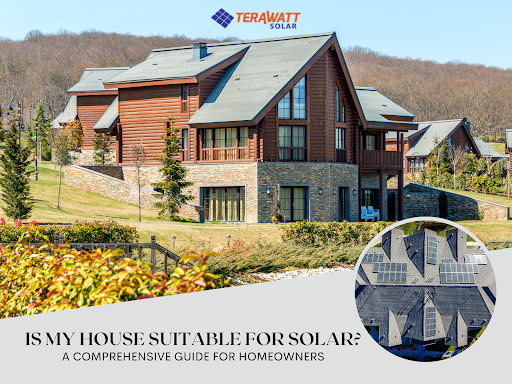
As the world moves towards renewable energy, homeowners are increasingly interested in solar power. Solar energy not only benefits the environment but also offers significant savings on electricity bills. The critical question, however, is whether your home is suitable for solar panel installation. This guide by Terawatt Solar is designed to help you navigate this decision with detailed assessments on various factors that determine solar viability.
Understanding Solar Energy and Its Benefits
Solar panels convert sunlight into electricity. The effectiveness of this conversion depends on several factors, including the amount of sunlight received, the type of panels used, and the installation’s orientation and angle.
Reduction in Electricity Bills
Significant Cost Savings
Solar power provides a reliable source of energy, reducing the need to purchase electricity from the grid.
Long-Term Financial Benefits
Although there is an initial investment, the long-term savings on electricity bills can be substantial.
Environmental Impact
Clean and Renewable
Solar energy is one of the cleanest sources of energy as it generates electricity without emitting greenhouse gasses.
Reduction in Carbon Footprint
By using solar power, homeowners can significantly reduce carbon footprint, contributing positively to the environment.
Increased Property Value
Higher Market Value
Homes equipped with solar installations are often appraised at higher values.
Attractiveness to Buyers
Solar panels can make a property more attractive to prospective buyers, potentially speeding up the sale process.
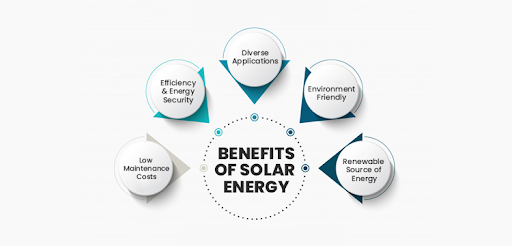
Key Factors for Assessing Solar Suitability
Roof Orientation
Directional Importance
In the Northern Hemisphere, the most effective orientation for solar panels is south-facing. This positioning ensures the maximum possible sun exposure throughout the day.
Seasonal Considerations
The sun’s path changes with seasons, and a south-facing orientation offers a consistent level of exposure across different times of the year.
Geographic Variations
Depending on your specific location, slight deviations from due south might be more optimal. It’s essential to consider local geographical and environmental factors.
Roof Angle and Efficiency
Ideal Angle Range
The most efficient angle for solar panels is typically between 30 to 45 degrees. This range maximizes sunlight absorption, directly influencing the effectiveness of the solar panels.
Flat Roofs
For flat roofs, additional mounting systems are required to tilt the panels towards the optimal angle. These adjustable mounts can be set to the precise angle needed for maximum efficiency.
Roof Design Adaptations
In cases where the roof angle is not ideal, solar panel installations can include adjustable tilt mechanisms to optimize the angle throughout the year, accommodating seasonal variations in the sun’s position.
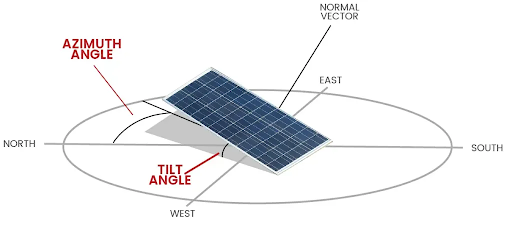
Shading Analysis
Natural Obstructions
Trees, especially tall or wide-canopied ones, can cast significant shadows on solar panels, particularly in the early morning or late afternoon. The angle of the sun during different seasons also affects the length and position of these shadows. Hence the installation of solar panels must be done in accordance.
Man-Made Structures
Nearby buildings, chimneys, and even satellite dishes can cause shading. The height and proximity of these structures play a crucial role in the extent of shading they cause.
Understanding Shading Patterns
It’s essential to observe the shading patterns over the course of a day and across different seasons, as the sun’s position changes.
Time-Varied Shading
Diurnal and Seasonal Variations
Shading is not constant throughout the day or year. The sun’s path causes varying shading patterns, which need to be considered for optimal solar panel placement.
Morning vs. Afternoon Shading
The intensity and impact of shading can differ between morning and afternoon. For example, morning shade might be more significant in certain areas due to the angle of the sun and surrounding obstacles.
Long-Term Planning
When planning for solar panels, it’s important to consider potential future changes in the environment, such as the growth of trees or construction of new buildings.
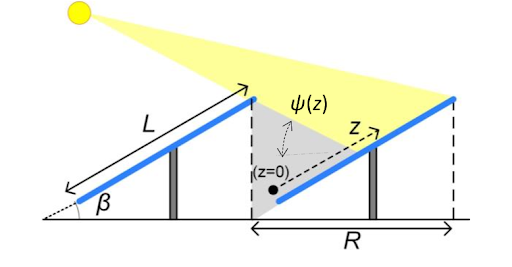
Tools for Analysis
Solar Pathfinder
Solar Pathfinder helps in mapping out the sun’s path and identifying potential shading issues. It gives a visual representation of how shadows might fall across the panels at different times.
Shading Analysis Software
Advanced software can simulate shading throughout the year, providing detailed insights into how shadows affect solar panel performance.
Professional Assessments
Experts can use a combination of tools and their expertise to provide a comprehensive shading analysis, taking into account all potential shading sources and their impacts.
Roof Condition
Assessing Roof Lifespan
The age of your roof is a critical factor. A roof nearing the end of its lifespan might need replacement before solar panel installation, as panels typically have a lifespan of 25-30 years.
Structural Load Capacity
It’s essential to ensure that the roof structure can support the additional weight of solar panels. This includes not only the panels but also the mounting hardware.
Inspection and Reinforcement
If the roof is older or has any signs of structural weakness, it may require reinforcement or repair. A professional assessment can determine if such steps are necessary.
Material Compatibility
Ideal Roofing Materials
Solar panels are most easily installed on composite or asphalt shingle roofs. These materials provide the right balance of durability and ease of installation.
Challenges with Certain Materials
Slate, tile, or metal roofs can present challenges for solar installation. These materials may require special mounting systems and can be more labor-intensive and costly to work with.
Alternative Solutions for Difficult Materials
In cases where the roof material is not ideal, there are specialized mounting systems and approaches that can be used. It’s important to work with a solar installer experienced in dealing with a variety of roofing materials.
Need for Upgrades or Repairs
Pre-Installation Evaluation
Before proceeding with solar panel installation, a comprehensive roof evaluation should be conducted to identify any necessary repairs or upgrades.
Addressing Roof Issues
Any issues, such as leaks, damaged shingles, or structural weaknesses, should be resolved prior to installation to avoid more complex and expensive repairs later.
Long-Term Considerations
It’s important to consider the long-term integrity of the roof. If a roof replacement is imminent, it may be more cost-effective to do it before installing solar panels to avoid the need to remove and reinstall them later.
Impact of Weather Patterns
Rainfall and Snowfall Effects
High rainfall and frequent snowfall can lead to reduced solar panel efficiency. Rain can wash away dirt and debris, potentially increasing efficiency post-rainfall, but heavy cloud cover can significantly reduce solar gain.
Dealing with Snow Accumulation
In areas with heavy snowfall, solar panels may need to be cleared regularly to maintain efficiency. Certain panel designs are better suited to shedding snow.
Mitigating Weather-Related Impacts
Selecting solar panels and installation methods designed to withstand local weather conditions is essential for maximizing efficiency and durability.
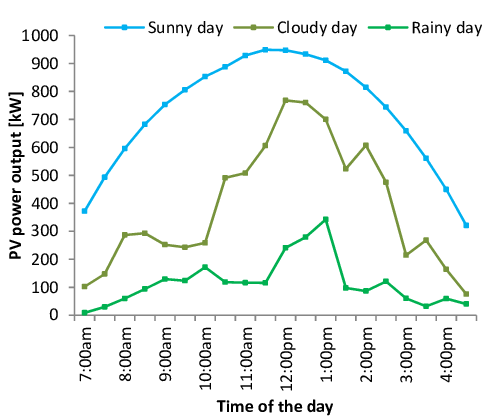
Adapting to Local Conditions
Panel Coatings for Protection
Special coatings can be applied to solar panels to protect against environmental factors like salt mist in coastal areas or dust in desert regions.
Tilt and Orientation Adjustments
Adjusting the tilt and orientation of solar panels can maximize exposure to sunlight, especially in areas with lower solar irradiance or unique geographical features.
Micro-Inverter Use
In regions with variable weather patterns, using micro-inverters can help optimize the output of each panel individually, mitigating the impact of partial shading or cloudy conditions.
Overcoming Challenges for Less Ideal Conditions
Innovative Mounting Solutions
Adjustable Mounts
In cases where the roof angle or orientation is not ideal for solar panels, adjustable mounts can be used. These mounts allow the panels to be positioned at the optimal angle, improving their efficiency.
Ground-Mounted Systems
If the roof is not suitable for solar panels, ground-mounted systems are an alternative. These systems can be placed in an open area of your property with better sun exposure.
Building-Integrated Photovoltaics (BIPV)
BIPV solutions, like solar shingles or solar glass, integrate photovoltaic materials directly into building surfaces, offering an alternative for buildings where traditional panels are not feasible.

Technology Enhancements
Microinverters and Power Optimizers
These technologies allow each solar panel to operate independently, reducing the impact of shading or different orientations on overall system performance.
Bifacial Solar Panels
Bifacial panels can capture sunlight from both sides, increasing their efficiency, particularly in areas with high levels of reflected light.
Community Solar Projects
Shared Solar Energy
For homes where solar installation is not practical, community solar projects offer an alternative. These projects allow multiple individuals to benefit from a single, large solar array located off-site.
Accessibility and Inclusivity
Community solar is particularly beneficial for renters, apartment dwellers, or homeowners with unsuitable roofs, as it provides access to solar energy without the need for individual solar panel installation.
Reduced Energy Costs
Participants in community solar projects typically receive credit on their electricity bills for the power produced by their share of the solar array, similar to if the panels were located on their own property.
What are you waiting for?
Determining if your house is suitable for solar involves a thorough assessment of several critical factors. By considering roof characteristics, local climate, energy needs, and potential shading, you can make an informed decision. Consulting with a solar installation expert company ensures a tailored solution that maximizes your investment. Embrace solar energy with Terawatt Solar and join the movement towards a sustainable future.